Introduction – Meghalaya
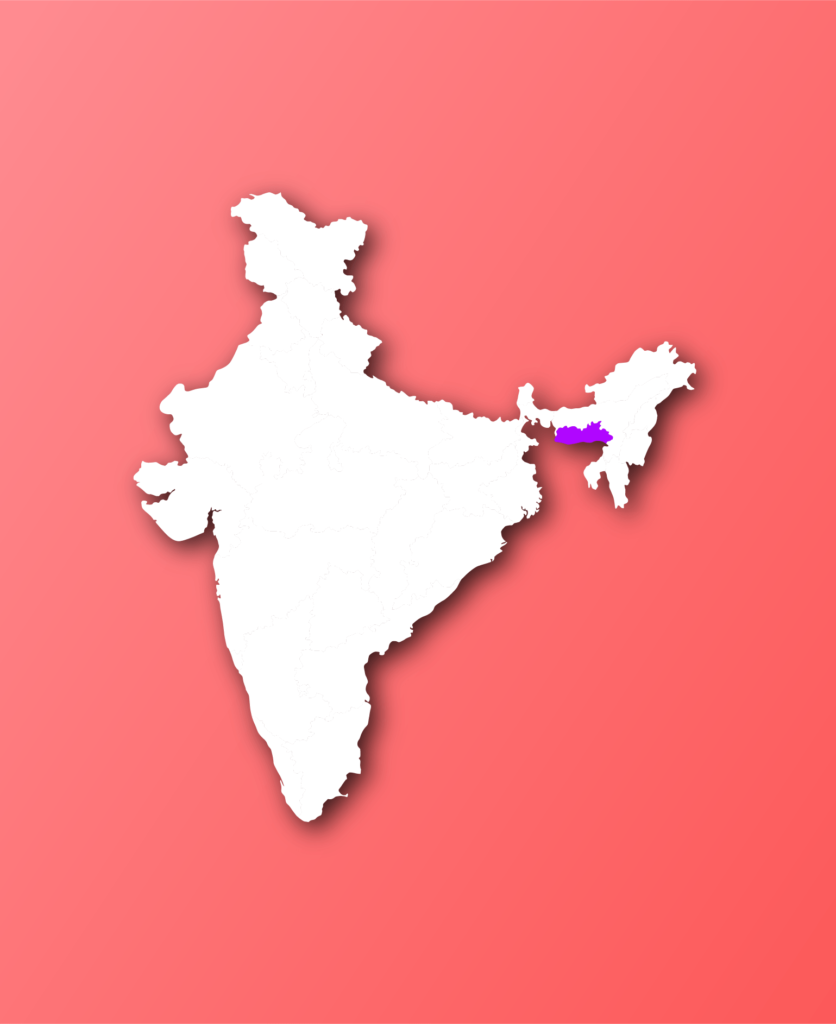
Welcome to Meghalaya, the enchanting northeastern state of India, often referred to as the “Abode of Clouds.” This picturesque region is renowned for its lush green landscapes, unique cultural heritage, and breathtaking natural beauty. Nestled amidst the Khasi and Garo Hills, Meghalaya offers an unparalleled experience for nature lovers, adventure seekers, and culture enthusiasts alike. But what makes this state so special? Let’s dive in and explore the myriad facets that make Meghalaya a must-visit destination.
Geography and Climate
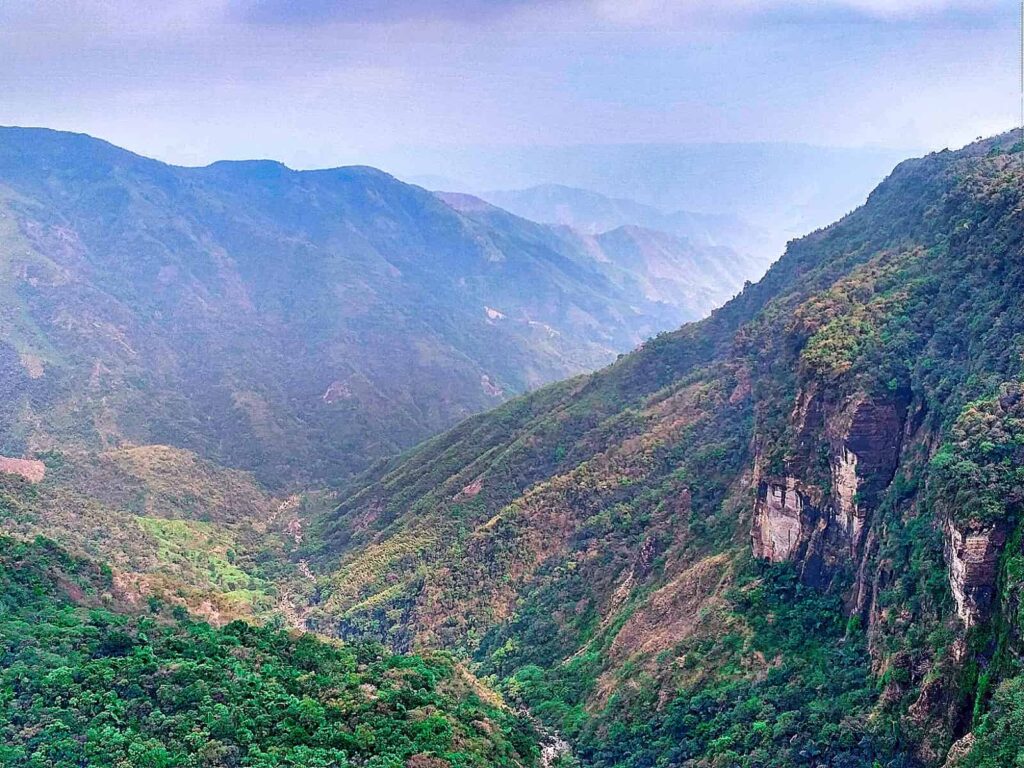
Location and Topography
Meghalaya is located in the northeastern part of India, sharing its borders with Assam to the north and east, and Bangladesh to the south and west. The state is characterized by its hilly terrain, with the Khasi, Garo, and Jaintia Hills forming the major mountain ranges. The stunning topography includes rolling hills, deep valleys, and numerous rivers, making it a haven for nature enthusiasts.
Climate and Weather Patterns
Meghalaya boasts a subtropical highland climate, which is predominantly influenced by the monsoons. The state receives heavy rainfall, especially in regions like Cherrapunji and Mawsynram, which are among the wettest places on Earth. The climate is generally cool and pleasant, with summer temperatures rarely exceeding 28°C (82°F) and winter temperatures averaging around 4°C (39°F).
Seasonal Variations
The state experiences three distinct seasons: summer (March to June), monsoon (June to September), and winter (October to February). The monsoon season brings heavy rainfall, transforming the landscape into a vibrant green paradise. Winter is ideal for tourists who prefer cooler weather and clear skies, while summer is perfect for exploring the lush outdoors.
History and Culture
Early History and Tribes
Meghalaya’s history is deeply rooted in its indigenous tribes, primarily the Khasi, Garo, and Jaintia communities. These tribes have inhabited the region for centuries, maintaining their unique traditions, customs, and way of life. The Khasi people are known for their matrilineal society, where lineage and inheritance are traced through the female line.
Colonial Influence
During the British colonial era, Meghalaya became a part of British India. The British influence can still be seen in the architecture and educational institutions established during that period. Shillong, the capital of Meghalaya, was once the summer capital of Eastern Bengal and Assam during British rule.
Modern-Day Culture
Today, Meghalaya is a melting pot of traditional and modern influences. The state’s cultural heritage is celebrated through various festivals, music, dance, and art forms. The people of Meghalaya are known for their warm hospitality and vibrant cultural expressions, making it a fascinating destination for cultural exploration.
Language and Demographics
Major Languages Spoken
Meghalaya is linguistically diverse, with Khasi, Garo, and Jaintia being the major languages spoken by the indigenous tribes. English is also widely used, especially in urban areas and for official purposes. Hindi and Bengali are spoken by smaller communities within the state.
Population Distribution
The population of Meghalaya is predominantly rural, with most people living in villages and small towns. Shillong is the largest city and serves as the administrative and cultural hub of the state. The rural-urban divide is evident, but the state’s connectivity and infrastructure are gradually improving.
Ethnic Groups and Communities
The Khasi, Garo, and Jaintia tribes form the majority of the population, each with its distinct cultural identity. These communities coexist harmoniously, contributing to the rich cultural mosaic of Meghalaya. There are also smaller ethnic groups and migrant communities that add to the state’s diversity.
Tourist Attractions
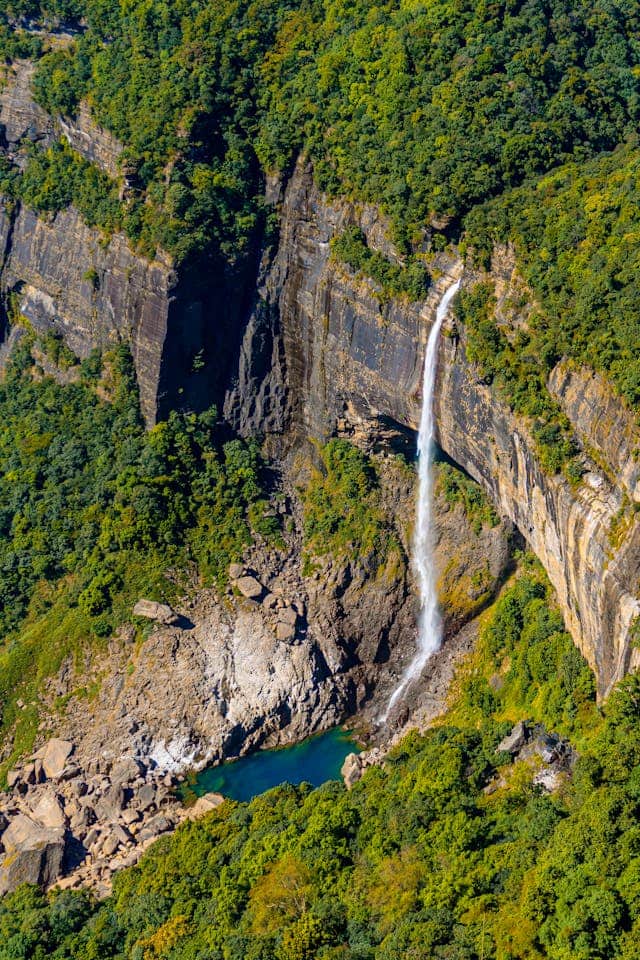
Shillong: The Rock Capital of India
Shillong, often referred to as the “Scotland of the East,” is the capital city of Meghalaya. It is known for its picturesque landscapes, vibrant music scene, and colonial-era architecture. Popular attractions include Ward’s Lake, Shillong Peak, and the bustling Police Bazaar.
Cherrapunji and Mawsynram: The Wettest Places on Earth
Cherrapunji and Mawsynram are famous for their record-breaking rainfall. These regions are home to stunning waterfalls, lush green valleys, and unique limestone caves. Nohkalikai Falls and Mawsmai Cave are must-visit spots for nature enthusiasts.
Living Root Bridges: Natural Marvels
One of Meghalaya’s most unique attractions is its living root bridges, ingeniously created by the Khasi people. These bridges, made from the roots of rubber trees, are functional works of art that blend seamlessly with the natural environment. The double-decker root bridge in Nongriat is particularly famous.
Dawki: Crystal Clear Waters
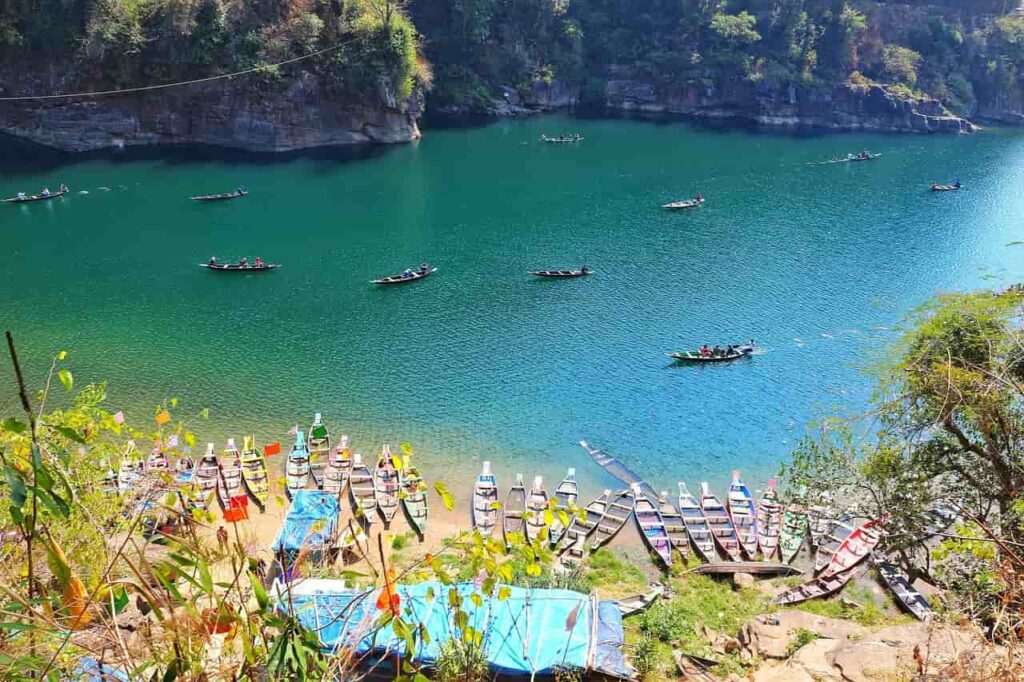
Dawki, a small town near the Bangladesh border, is renowned for the Umngot River, which boasts crystal-clear waters. A boat ride on this river gives the illusion of floating on air due to the water’s transparency. The Dawki Bridge and nearby Shnongpdeng village are also popular spots.
Nokrek National Park: Biodiversity Hotspot
Nokrek National Park, a UNESCO Biosphere Reserve, is a treasure trove of biodiversity. The park is home to a variety of flora and fauna, including the endangered red panda and the elusive Hoolock gibbon. It is an ideal destination for wildlife enthusiasts and researchers.
Mawlynnong: Asia’s Cleanest Village
Mawlynnong, often dubbed “God’s Own Garden,” has earned the title of Asia’s cleanest village. The community’s dedication to cleanliness and eco-friendly practices is commendable. Visitors can explore the village’s scenic beauty, living root bridges, and Sky Walk—a bamboo structure offering panoramic views.
Adventure and Outdoor Activities
Trekking and Hiking Trails
Meghalaya offers a plethora of trekking and hiking trails that cater to all levels of adventure seekers. Popular trails include the David Scott Trail, the Living Root Bridge Trek, and the trek to Laitlum Canyons. These trails provide breathtaking views and opportunities to connect with nature.
Waterfalls and Water Sports
The state’s numerous waterfalls, such as Elephant Falls, Nohkalikai Falls, and Kynrem Falls, are ideal for sightseeing and photography. Adventure enthusiasts can indulge in water sports like kayaking, rafting, and fishing in the state’s rivers and lakes.
Caving Adventures
Meghalaya’s limestone caves, such as Siju Cave, Mawsmai Cave, and Liat Prah, offer thrilling caving experiences. These caves, with their intricate formations and underground rivers, are perfect for spelunking and exploring the hidden wonders of the subterranean world.
Flora and Fauna
Unique Plant Species
The state’s diverse climate and geography support a wide variety of plant species. Meghalaya is known for its orchids, with over 300 species found here. The pitcher plant, an insect-eating plant, is another unique species that thrives in the region’s wetlands.
Wildlife Sanctuaries and Reserves
Meghalaya is home to several wildlife sanctuaries and reserves, including the Balpakram National Park, Siju Wildlife Sanctuary, and Nongkhyllem Wildlife Sanctuary. These protected areas are crucial for the conservation of the state’s rich biodiversity.
Endemic Species
The state’s forests and ecosystems support numerous endemic species, including the Western Hoolock gibbon, the Khasi Hill toad, and the clouded leopard. These species highlight the ecological importance of Meghalaya’s natural habitats.
Cuisine and Local Delicacies
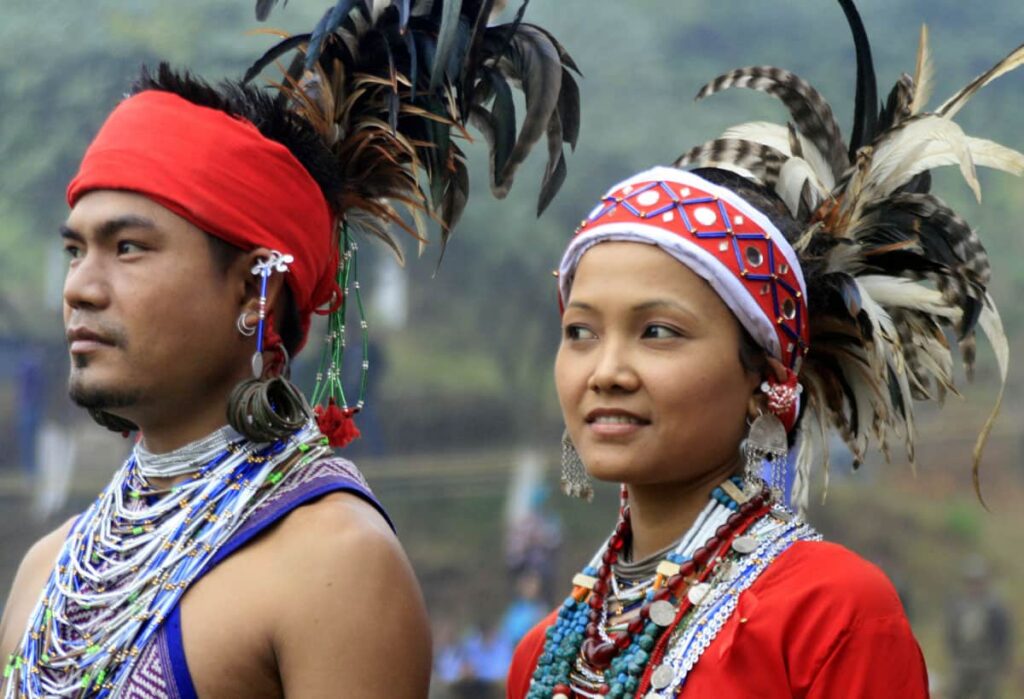
Traditional Khasi, Garo, and Jaintia Dishes
Meghalaya’s cuisine is a delightful blend of flavors, with each tribe offering its unique dishes. Traditional Khasi dishes like Jadoh (rice with meat), Dohneiiong (pork with black sesame), and Nakham Bitchi (dry fish soup) are must-tries. Garo dishes, such as Wak Pura (banana leaf-wrapped pork) and Pumaloi (steamed rice cake), and Jaintia delicacies like Tungtap (fermented fish) offer a gastronomic adventure.
Street Food Experiences
Shillong’s street food scene is vibrant and diverse. From momos (dumplings) and chow mein to jalebis (sweet pretzels) and tungrymbai (fermented soybean), the city’s streets are a food lover’s paradise. The night market at Police Bazaar is a great place to sample local street food.
Culinary Festivals
Meghalaya hosts several culinary festivals that celebrate its rich food heritage. The Shillong Autumn Festival and the Wangala Festival are notable events where visitors can enjoy traditional music, dance, and an array of local delicacies.
Festivals and Celebrations
Shad Suk Mynsiem
Shad Suk Mynsiem, also known as the “Dance of Joyful Hearts,” is a major Khasi festival celebrated with traditional music and dance. It is a thanksgiving festival where the Khasi people offer gratitude for the harvest and pray for prosperity.
Nongkrem Dance Festival
The Nongkrem Dance Festival, another significant Khasi festival, is held annually to appease the deity Ka Blei Synshar for a bountiful harvest. The festival features vibrant dances, rituals, and traditional attire, attracting visitors from far and wide.
Wangala Festival
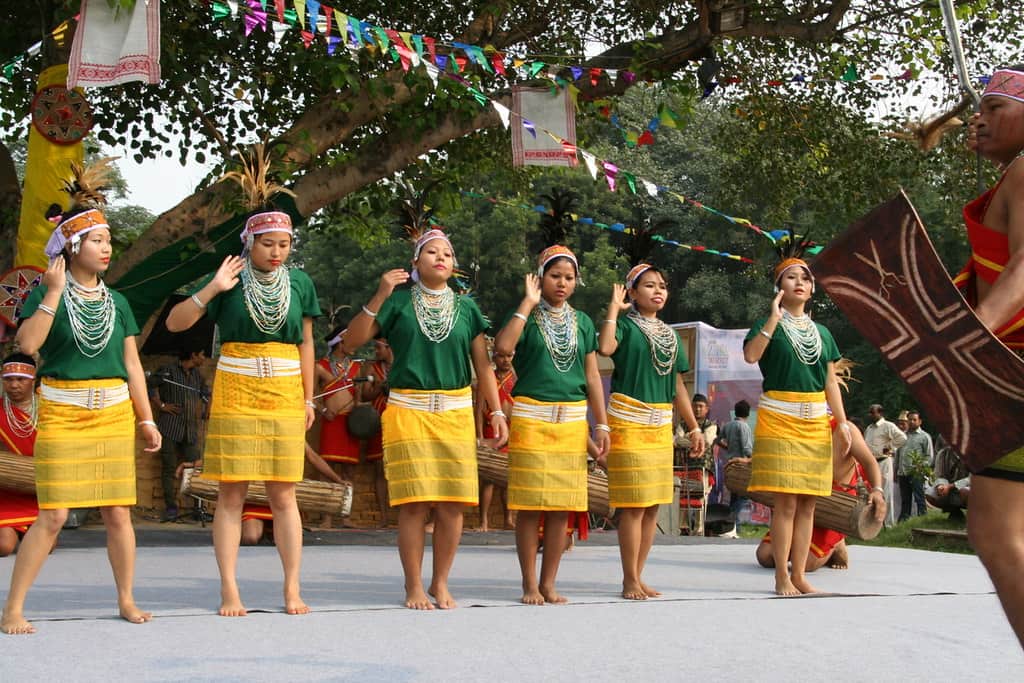
The Wangala Festival, celebrated by the Garo tribe, marks the end of the agricultural year. Also known as the “Hundred Drums Festival,” it features traditional dances, music, and rituals, showcasing the Garo community’s rich cultural heritage.
Behdienkhlam Festival
Behdienkhlam is a prominent Jaintia festival that involves a series of rituals and ceremonies to drive away evil spirits and bring good fortune. The festival is marked by traditional dances, music, and the immersion of elaborately decorated wooden structures in water.
Economic Activities
Agriculture and Horticulture
Agriculture is the backbone of Meghalaya’s economy, with a significant portion of the population engaged in farming. The state is known for its cultivation of rice, maize, potatoes, and a variety of fruits like oranges, pineapples, and bananas. Horticulture, including the cultivation of flowers and medicinal plants, is also a growing sector.
Handicrafts and Local Industries
Meghalaya’s rich tradition of handicrafts includes bamboo and cane products, weaving, and pottery. These crafts are not only an essential part of the state’s cultural heritage but also contribute to the local economy. Local industries, such as sericulture and handloom, play a vital role in providing employment and sustaining traditional crafts.
Tourism’s Impact on the Economy
Tourism is a burgeoning industry in Meghalaya, attracting visitors from across the globe. The state’s natural beauty, cultural heritage, and adventure opportunities have made it a popular destination. Tourism has significantly contributed to the state’s economy, providing livelihoods to many and promoting sustainable development.
Education and Literacy
Educational Institutions
Meghalaya is home to several renowned educational institutions, including North-Eastern Hill University (NEHU) in Shillong. The state has numerous schools, colleges, and vocational training centers that provide quality education to its residents.
Literacy Rates and Challenges
The literacy rate in Meghalaya is relatively high compared to other northeastern states, but there are still challenges to be addressed. Rural areas often face issues like inadequate infrastructure, lack of trained teachers, and limited access to educational resources.
Government Initiatives
The government of Meghalaya has implemented various initiatives to improve education and literacy in the state. Programs like the Sarva Shiksha Abhiyan (SSA) and the Rashtriya Madhyamik Shiksha Abhiyan (RMSA) aim to provide universal education and enhance the quality of secondary education.
Transportation and Connectivity
Major Highways and Roads
Meghalaya is well-connected by a network of highways and roads. The National Highway 40 (NH40) connects Shillong to Guwahati in Assam, facilitating easy access to the state. The road infrastructure is continuously being improved to enhance connectivity within the state.
Public Transportation Options
Public transportation in Meghalaya includes buses, taxis, and shared cabs. The Meghalaya Transport Corporation (MTC) operates bus services connecting major towns and cities. Private taxis and shared cabs are also popular means of transportation.
Nearest Airports and Railway Stations
Lokpriya Gopinath Bordoloi International Airport in Assam is the nearest airport to Meghalaya. Shillong also has a smaller airport at Umroi, offering limited connectivity. The closest major railway station is in Guwahati, from where travelers can access various parts of Meghalaya by road.
Environmental Conservation
Sustainable Practices
Meghalaya is committed to sustainable development and environmental conservation. The state’s traditional practices, such as the creation of living root bridges and community-managed forests, reflect a deep respect for nature. These sustainable practices are crucial for preserving the state’s natural resources.
Community-Led Conservation Efforts
Communities in Meghalaya play a vital role in conservation efforts. Local initiatives, such as the conservation of sacred groves and the protection of wildlife habitats, are driven by community participation. These efforts have helped maintain the ecological balance and biodiversity of the region.
Government Policies
The government of Meghalaya has implemented various policies to promote environmental conservation. Programs focused on afforestation, wildlife protection, and sustainable tourism aim to preserve the state’s natural heritage for future generations.
Challenges and Opportunities
Economic Development Challenges
Despite its natural beauty and cultural wealth, Meghalaya faces challenges in economic development. Issues such as inadequate infrastructure, limited industrialization, and unemployment need to be addressed to ensure sustainable growth.
Opportunities for Growth and Investment
Meghalaya offers numerous opportunities for growth and investment, particularly in sectors like tourism, agriculture, and renewable energy. By leveraging its natural resources and cultural heritage, the state can attract investment and drive economic development.
Role of Government and NGOs
The government and non-governmental organizations (NGOs) play a crucial role in addressing the state’s challenges and harnessing its opportunities. Collaborative efforts focused on education, healthcare, and sustainable development are essential for Meghalaya’s progress.
Conclusion
Meghalaya, with its stunning landscapes, rich cultural heritage, and warm hospitality, is a destination that captivates the heart and soul. Whether you’re exploring the misty hills of Shillong, marveling at the living root bridges, or indulging in the state’s delectable cuisine, Meghalaya offers a unique and unforgettable experience. So pack your bags and embark on a journey to the Abode of Clouds—Meghalaya awaits you with open arms.
Picture credits: https://www.pexels.com/ ; https://pixabay.com/
Like this post?
Give a glance to other posts from Indyviews : https://indyviews.in/blogsy/
